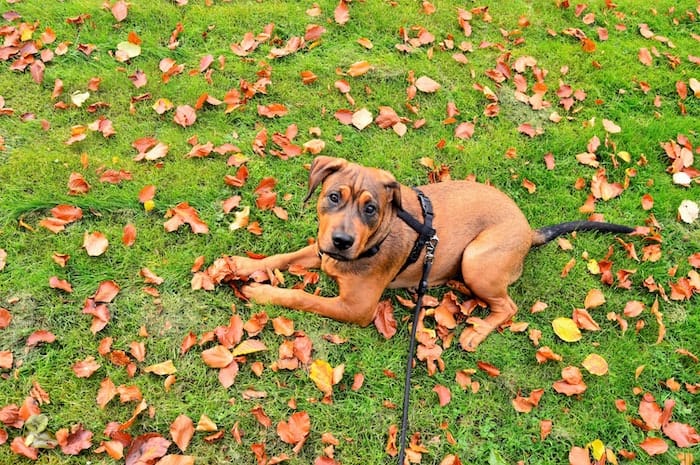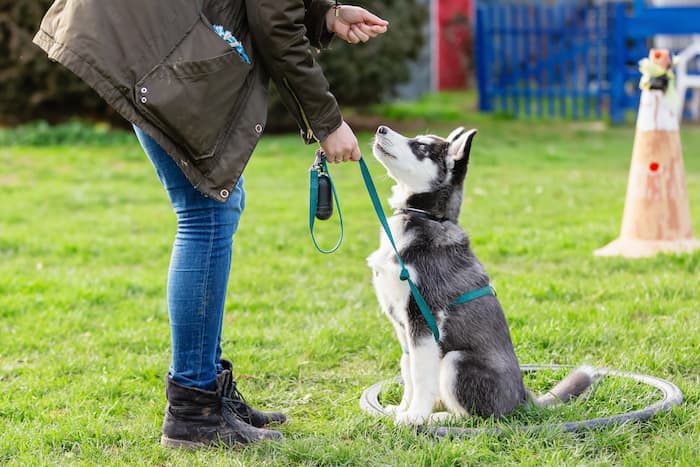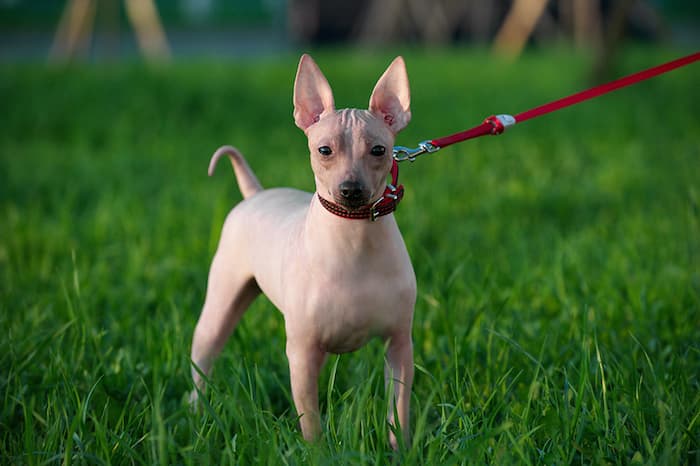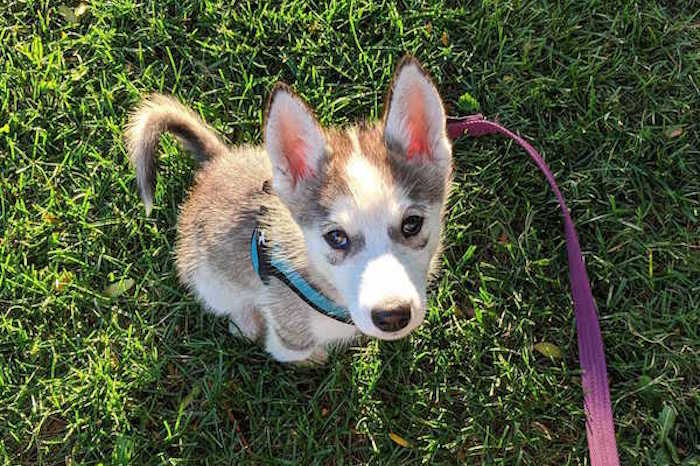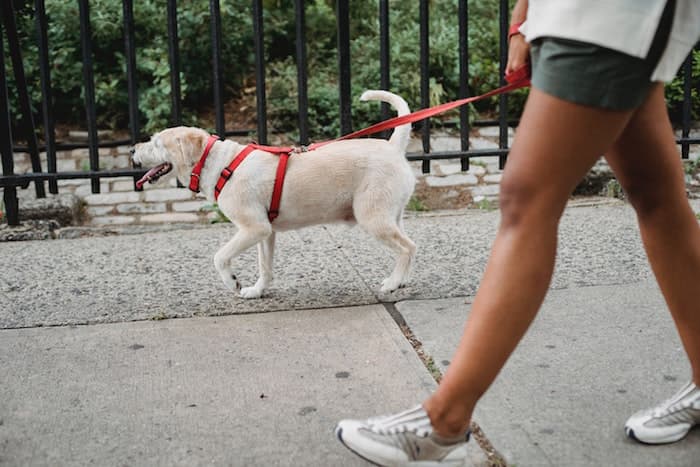When training your puppy, you’ll also need to teach them how to use a leash properly. After a dog has been leash trained, they are much easier to control when outdoors and can be brought to places that allow dogs. If the dog hasn’t been trained, it’s dangerous to take them places where they could get lost or hurt.
Here you’ll find a guide on leash training your dog while they are still a puppy, which is the best time to do it. We have advice on how to train your furry friend to accept the leash and behave themselves when it’s placed on them, along with troubleshooting tips for those who are having problems.
If you’re on this page, you’ve figured out that the Internet has a lot of information about dogs and dog ownership. It’s also great for finding recommendations for products, like the best dog collars for a French bulldog, for example.
How To Train With A Leash
There are five fundamental steps when teaching your dog to walk with a leash. These steps don’t just work well with French bulldogs, they can be applied to any canine breed since they learn similarly.
When training, you should always use positive reinforcement. This is where you don’t act negatively towards the dog, who will just mistake it for play or for anger, you either praise the dog when they do right or reward them when they do wrong.
Getting angry or frustrated at the dog will only make them upset, which can lead to even worse behavior and make them even harder to train.
Show The Puppy Its Leash
To start, you need to show the puppy the leash that you’ll be training it with. If you prefer a harness, then you can use one of those as well. Put it on them for short periods while they are in the house, where they are relaxed. If they need encouragement or calming down, you can give them treats and other rewards.
If you do this, time with a leash will be associated with praise and food, making the dog more accepting of it.
Teach Them Cues
Next, you need to introduce cues that communicate what you want the dog to do. While you can’t have a conversation with your bulldog, you can teach them phrases and sounds that you both understand. Then, when you say that phrase, the dog knows exactly what to do to make you happy and earn a reward. Many people click their tongue or use simple words (words with one syllable work best).
When teaching cues, you should be in a quiet place that doesn’t have any distractions. Put the collar and leash on your puppy and then make the sound. If the pup turns to you, give them a treat. Repeat this a few times until the puppy looks at you and also walks over, expecting their treat.
Make The Puppy Walk
As your puppy is making its way towards you, you should step back. They should make up the extra distance to reach you. If they don’t, try the process again. If they do reach you, reward them and repeat again.
Puppies have a short attention span, so you shouldn’t repeat things too much in one session. Instead, it’s better to keep training sessions short and have more of them throughout the week. You should be able to tell how eager your puppy is by its demeanor.
Keep Practicing Inside
Now your puppy knows how to come to you when you want. That’s useful but it is not quite walking yet, so find a space with no distractions and walk the dog around. Pace the room with the dog, rewarding them with treats and praise when they walk alongside you.
In time, they should start doing it automatically when there isn’t a treat involved. Still, you should pet and praise your dog whenever they follow your directions, no matter how old and smart they are!
Practice Outside
You probably weren’t planning on walking to your living room, so now you need to take it outside. There are a lot more distractions outside than they are in your home, which means you need to be patient and allow your bulldog to acclimatize.
First, take them to an outdoor place that they are familiar with. A backyard works great for this as it should be a place the dog has seen and smelled. Train like you did in the house, repeating until you get results.
Then you need to take it to a public space. Your pup will inevitably get distracted by the sounds and smells that were not present in your home – be patient and keep walks short to avoid any issues. Always keep your eyes on the pup and, if they look like they are ready to run away, say your cue and step away from them. They should come to you for a reward, which you should give them.
By repeating this process, gradually making the walks longer, you can train the dog to behave on its leash.
If your puppy responds well to this training, you might eventually be able to train it to do obstacle courses. You might have seen a dog climbing a ladder or running through a tunnel but you should start with the basics of getting your puppy mastering a small table top obstacle. With that said, don’t get ahead of yourself and miss mastering basic obedience training.
Troubleshooting
While it may sound easy from our five steps, dog training can be difficult sometimes. Everybody needs a helping hand at some point, so we have some troubleshooting tips that may help you if you are having trouble.
Become A Tree
Our first tip is for pups that pull, which is common for young, enthusiastic dogs. Many owners make the mistake of moving with their pups, even quickening the pace to join them. Your pup should learn to walk at your pace, which means they shouldn’t pull at the leash. When they do, stand very still and don’t move. The dog should pull, stop, see that you’ve stopped, and then come back. Don’t yank the leash – the dog will just think you’re having fun or scorning it.
Be Proactive
If your dog lunges at something, like a squirrel or a car, you should be proactive in stopping them. As we said, you should watch your dog with a close eye and recognize the movements they make when tense/gearing up to chase something. When they start doing that, give them a treat or use something else to divert their attention.
Keep Fit
By keeping your dog fit, you can stop them from acting out on walks. Many dog breeds that bark at others do so due to a lack of exercise. Physical activity isn’t just, well, physically stimulating – it also helps stimulate their brains. Make sure the dog gets the activity that its age and breed demands.
You can also distract your dog with treats and other attractive items as a temporary fix. It’s hard for your pup to bark when they have a treat in their mouth, after all! Step away from them, stay still, and offer treats before they have a chance to start barking. This will make the dog look at you whenever they see something they want to chase.
Conclusion
With this advice, you should be able to teach your French bulldog, or any dog, to love their leash. While specific details may vary across other trainers’ methods, these are the fundamentals that guarantee your puppy learns the behavior and carries it with them throughout their life.
Training your dog while they are young is ideal since this is when they are willing to learn. An older dog, which has already learned from previous owners and has its own habits, can be much harder to train.

